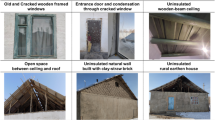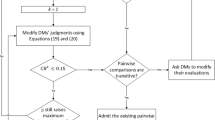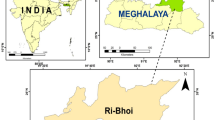Abstract
Solar energy is among the sustainable and renewable energy sources that has become an important and inevitable part of our lives today. It is of great importance to consider economic, environmental, and social factors in determining the installation locations of solar power plants (SPP). In this study, we aimed to determine suitable areas where SPP can be established in Safranbolu District by using the fuzzy analytical hierarchy process (FAHP), which is one of the multiple criteria decision making (MCDM) method together with Geographic Information Systems (GIS), to enable the decision-makers to express their preferences in approximate or adaptable ways. The criteria addressed in the technical analysis process were also determined by supporting the basic principles of impact assessment systems. Within the scope of the environmental analysis, the relevant national and international legal frameworks were also examined and the legal constraints were identified. Thus, in the process of determining the optimal areas for SPP, it has been attempted to produce sustainable solutions that are expected to have minimal impact on the integrity of the natural system. This study was carried on within a scientific, technical, and legal framework. According to the results obtained, the Safranbolu District had low, medium, and high sensitivity properties for SPP construction, and the areas suitable for SPP construction provided medium and high sensitivity of 10.86% and 27.26% correspondence detected according to the Chang (Eur J Oper Res 95(3): 649-655, 1996) and Buckley (Fuzzy Set Syst 17(3): 233-247, 1985) methods, respectively. There are very suitable areas for SPP installations in the central and western parts of Safranbolu District, and there are also areas suitable for SPP installation in the northern and southern parts of the district. Thanks to this study, suitable SPP establishment areas were determined for the under protection in a location in Safranbolu where clean energy is needed. It was also observed that these areas do not conflict with the basic principles of impact assessment systems.








Similar content being viewed by others
Data availability
All data and materials generated or analyzed during this study are included in this published article and its supplementary information. Data will be made available on request.
References
AFAD (2022) Earthquake data. Disaster & Emergency Management Authority Presidential of Earthquake Department http://www.deprem.gov.tr/sarbis/Shared/Default.aspx. Accessed June 06, 2022
Al Garni HZ, Awasthi A (2017) Solar PV power plant site selection using a GIS-AHP based approach with application in Saudi Arabia. Appl Energ 206:1225–1240. https://doi.org/10.1016/j.apenergy.2017.10.024
Al-Mulali U, Solarin SA, Sheau-Ting L, Ozturk I (2016) Does moving towards renewable energy cause water and land inefficiency? An empirical investigation. Energ Policy 93:303–314. https://doi.org/10.1016/j.enpol.2016.03.023
Alosta A, Elmansuri O, Badi I (2021) Resolving a location selection problem by means of an integrated AHP-RAFSI approach. Rep Mech Eng 2(1):135–142. https://doi.org/10.31181/rme200102135a
Alternatürk (2022) Usage areas of solar energy. https://www.alternaturk.org/gunes-enerjisi-kullanim-alanlari.php. Accessed May 26, 2022
Anderson DR, Sweeney DJ, Williams TA (1997) Quantitative methods for business 7e. International Thomson Publishing, London, Ohio
Asakereh A, Soleymani M, Sheikhdavoodi MJ (2017) A GIS-based fuzzy-AHP method for the evaluation of solar farms locations: case study in Khuzestan province, Iran. Sol Energy 155:342–353. https://doi.org/10.1016/j.solener.2017.05.075
Awasthi A, Govindan K, Gold S (2018) Multi-tier sustainable global supplier selection using a fuzzy AHP-VIKOR based approach. Int J Produc Economics 195:106–117
Aydın Ö (2009) Hospital location for Ankara with fuzzy AHP. DEU Faculty of Economics and Administrative. Sci. J. 24(2):87–104
Bakır M, Atalık Ö (2021) Application of fuzzy AHP and fuzzy MARCOS approach for the evaluation of e-service quality in the airline industry. Decis Mak: Appl Manag Eng 4(1):127–152. https://doi.org/10.31181/dmame2104127b
Buckley JJ (1985) Fuzzy hierarchical analysis. Fuzzy Set Syst 17(3):233–247. https://doi.org/10.1016/0165-0114(85)90090-9
Bulut H, Büyükalaca O (2007) Simple model for the generation of daily global solar-radiation data in Turkey. Appl Energ 84(5):477–491. https://doi.org/10.1016/j.apenergy.2006.10.003
Çağlayan N, Ertekin C, Evrendilek F (2014) Spatial viability analysis of grid-connected photovoltaic- power systems for Turkey. Int J Elect Power Energy Sys 56:270–278. https://doi.org/10.1016/j.ijepes.2013.11.019
Can E (2019) Analysis of risks that are based on the aerial photography used in photogrammetric monitoring maps for environmental wind power energy plant projects. Environ Monit Assess 19:746. https://doi.org/10.1007/s10661-019-7944-8
Can E, Erbıyık H (2020) Research of the risks that are originated from topographic terrestrial observations in wind energy power plant projects. AKU J Sci Eng 20(4):741–752. https://doi.org/10.35414/akufemubid.664701
Chang DY (1996) Applications of the extent analysis method on fuzzy AHP. Eur J Oper Res 95(3):649–655. https://doi.org/10.1016/0377-2217(95)00300-2
Charabi Y, Gastli A (2011) PV site suitability analysis using GIS-based spatial fuzzy multi-criteria evaluation. Renew Energy 36(9):2554–2561. https://doi.org/10.1016/j.renene.2010.10.037
Çolak HE, Memişoğlu T, Gerçek Y (2020) Optimal site selection for solar photovoltaic (PV) power plants using GIS and AHP: a case study of Malatya Province, Turkey. Renew Energy 149:565–576. https://doi.org/10.1016/j.renene.2019.12.078
Demir G, Bircan H (2020) Comparison of BWM and FUCOM methods of criteria weighting methods and an application. Sivas Cumhuriyet Univ J Econ Adm Sci 21(2):170–185. https://doi.org/10.37880/cumuiibf.616766
Directorate General of Spatial Planning (2022) Ministry of environment urbanization and climate change. https://mpgm.csb.gov.tr/zonguldak---bartin---karabuk-planlama-bolgesi-i-82195. Accessed July 27, 2022
Ecer F (2018) An integrated fuzzy AHP and ARAS model to evaluate mobile banking services. Technol Econ Dev Eco 24(2):670–695. https://doi.org/10.3846/20294913.2016.1255275
Effat HA (2013) Selection of potential sites for solar energy farms in Ismailia Governorate, Egypt using SRTM and multicriteria analysis. Int J Advan Remote Sens GIS 2(1):205–220
Energy Atlas (2022) Karabük solar energy plants. https://www.enerjiatlasi.com/gunes-enerjisi-haritasi/karabuk. Accessed May 24, 2022
Eroğlu H (2018) The suitability map determination for solar power plants: a case study. Iğdır Univ J Institute of Sci Technol 8(4):97–106. https://doi.org/10.21597/jist.430615
Esmaeilpour-Poodeh S, Ghorbani R, Hosseini SA, Salmanmahiny A, Rezaei H, Kamyab H (2022) GIS-based mathematical matrices method to impact assessment of sturgeon farming Case study: southeast coasts of the Caspian Sea, Iran. Environ Eng Manag J 21:1235–1244
Felix TS, Kumar TMK, Lau HCW, Choy KL (2008) Global supplier selection: a fuzzy-AHP approach. Int J Produc Research 46(14):3825–3857. https://doi.org/10.1080/00207540600787200
Gedik İ, Aksay A (2002) 1:100 000 scale geological map of Türkiye No:25 Zonguldak E–29 section. Geological Studies Office. General Directorate of Mineral Research and Exploration MTA, Ankara, Türkiye, pp 23
Geißler G, Dahmen M, Köppel J (2021) Strategic environmental assessment in the energy sector. In: Fischer TB, González A (eds) Handbook on strategic environmental assessment. Edward Elgar Publishing, Cheltenham, UK, pp 182–202
Goh HH, Li C, Zhang D, Dai W, Lim CS, Kurniawan TA, Goh KC (2022) Application of choosing by advantages to determine the optimal site for solar power plants. Sci Rep 12:4113. https://doi.org/10.1038/s41598-022-08193-1
Güler D, Yomralıoğlu T (2018) GIS and fuzzy AHP based area selection for electric vehicle charging stations. The International Archives of the Photogrammetry, Remote Sensing and Spatial Information Sciences. Volume XLII-4, 249–252. ISPRS TC IV Mid-term Symposium on 3D Spatial Information Science –The Engine of Change, Delft, 1–5 October 2018, Delft, The Netherlands. https://doi.org/10.5194/isprs-archives-XLII-4-249-2018
Harcar T (1992) Decision making in the armed forces, 1st edn. KHO publications, Ankara, Türkiye, pp 9–12
Jebli MB, Youssef SB (2017) The role of renewable energy and agriculture in reducing CO2 emissions: evidence for North Africa countries. Ecol Indic 74:295–301. https://doi.org/10.1016/j.ecolind.2016.11.032
Karabük Provincial Directorate of Culture and Tourism (2022) https://karabuk.ktb.gov.tr/. Accessed July 27, 2022
Karabük Regional Commission for the Protection of Natural Assets (2022) Republic of Türkiye Ministry of Environment Urbanization and Climate Change. https://korumakurullari.ktb.gov.tr/TR-89334/karabuk-kultur-varliklarini-koruma-bolge-kurulu-mudurlu-.html. Accessed July 27, 2022
Karabulut AI, Yazici-Karabulut B, Derin P, Yesilnacar MI, Cullu MA (2022) Landfill siting for municipal solid waste using remote sensing and geographic information system integrated analytic hierarchy process and simple additive weighting methods from the point of view of a fast-growing metropolitan area in GAP area of Turkey. Env Sci Pol Res 29:4044–4061. https://doi.org/10.1007/s11356-021-15951-7
Karamaşa Ç, Demir E, Memiş S, Korucuk S (2021) Weighting the factors affecting logistics outsourcing. Decis Mak: Appl Manag Eng 4(1):19–32. https://doi.org/10.31181/dmame2104019k
Karipoğlu F, Genç MS, Akarsu B (2022) GIS-based optimal site selection for the solar-powered hydrogen fuel charge stations. Fuel 324(Part B):124626. https://doi.org/10.1016/j.fuel.2022.124626
Kaygusuz K, Ayhan T (1999) Analysis of solar radiation data for Trabzon, Turkey. Energy Convers Manag 40(5):545–556
Kengpol A, Rontlaong P, Tuonen M (2013) A decision support system for selection of solar power plant locations by applying fuzzy AHP and TOPSIS: an empirical study. J Softw Eng Appl 6(9):470–481
Keskin Citiroglu H, Arca D (2022) GIS-based determination of solar power plant (SPP) sites by the MCDA method: Ovacık District, Karabük-Türkiye. Environ Eng Manag J 21:1899–1910
Klir GJ, Yuan B (1995) Fuzzy sets and fuzzy logic. Prentice Hall PTR, USA, p 574
Köseoğlu N (2015) Physical geography of Safranbolu town. MSc Thesis. Karabük University Institute of Social Sciences Department of Geography, 136 pp
Lee M, Pham H, Zhang X (1999) A methodology for priority setting with application to software development process. Eur J Oper Res 118:375–389
Li P, Gao X, Li Z, Zhou X (2022) Physical analysis of the environmental impacts of fishery complementary photovoltaic power plant. Environ Sci Pollut Res 29:46108–46117. https://doi.org/10.1007/s11356-022-18930-8
Marinelli M, Janardhanan M (2022) Green cement production in India: prioritization and alleviation of barriers using the best–worst method. Environ Sci Pollut Res 29:63988–64003. https://doi.org/10.1007/s11356-022-20217-x
Mazur L, Bac A, Vaverkova MD, Winkler J, Nowysz A, Koda E (2022) Evaluation of the quality of the housing environment using multi-criteria analysis that includes energy efficiency: a review. Energies 15:7750
Memişoğlu T (2014) Environmental pollutants analysis along the river valley with geographic information systems: case study of Trabzon province, Türkiye. MSc. Thesis, Karadeniz Technical University, Institute of Science and Technology Geomatic Engineering Department, Trabzon, Turkey, pp 159
MENRT (2022) Solar energy potential atlas (GEPA). Ministry of Energy and Natural Resources of Türkiye, Directorate General of Energy Affairs. https://gepa.enerji.gov.tr/MyCalculator/pages/78.aspx. Accessed May 24, 2022
Ministry of Agriculture and Forestry, Karabük Provincial Branch Directorate (2022) https://bolge10.tarimorman.gov.tr/Menu/15/Karabuk-Il-Sube-Mudurlugu. Accessed June 04, 2022
MTA (2022) Earth sciences map viewer and drawing editor. General Directorate of Mineral Research and Exploration, MTA. http://yerbilimleri.mta.gov.tr/anasayfa.aspx. Accessed June 06, 2022
Munteanu CS (2007) Assessing the potential of wind power in Romania within Kyoto targets. Environ Eng Manag J 6(3):219–224
Noorollahi E, Fadai D, Akbarpour Shirazi M, Ghodsipour S (2016) Land suitability analysis for solar farms exploitation using GIS and fuzzy analytic hierarchy process (FAHP)—a case study of Iran. Energies 9(8):643. https://doi.org/10.3390/en9080643
Nourani V, Elkiran G, Abdullahi J, Tahsin A (2019) Multi-region modeling of daily global solar radiation with artificial intelligence ensemble. Nat Resour Researc 28(4):1217–1238
Omenge PM, Obwoyere GO, Eshiamwata GW, Makindi SM, Nathwani J (2020) Environmental and social impact assessment procedural steps that underpin conflict identification: reference to renewable energy resource development in Kenya. Int J Energy Prod Manag 5(2):157–174
Oral M (2020) Solar energy potential of Türkiye and evaluation of PV applications in local scale: case of Karabük province. Int J Geogr Geogr Educa (IGGE) 42:482–503. https://doi.org/10.32003/igge.743513
Partidário MR (2021) Strategic thinking for sustainability (ST4S) in strategic environmental assessment. In: Fischer TB, González A (eds) Handbook on strategic environmental assessment. Edward Elgar Publishing, Cheltenham, UK, pp 41–57
Pöyhönen M, Hämäläinen RP (2001) On the convergence of multi attribute weighting methods. Eur J Oper Res 129(3):569–583
Rehman S, Khan SA (2017) Multi-criteria wind turbine selection using weighted sum approach. Int J Adv Comput Sci Appl 8:128–132. https://doi.org/10.14569/IJACSA.2017.080616
Sadler B (2005) Canada. In: Jones C, Baker M, Carter J, Jay S, Short M, Wood C (eds) Strategical environmental assessment and land use planning, an international evaluation. Earthscan Publishing, UK, pp 44–61
Sánchez-Lozano JM, Teruel-Solano J, Soto-Elvira P, García-Cascales MS (2013) Geographical information systems (GIS) and multi-criteria decision making (MCDM) methods for the evaluation of solar farms locations: case study in south-eastern Spain. Renew Sust Energ Rev 24:544–556. https://doi.org/10.1016/j.rser.2013.03.019
Sarsıcı N (2020) Determination of the areas where solar energy power plant (SPP) can be established in Karabük with multi-criteria decision making analysis. MSc Thesis. Karabük University Graduate Education Institute Geography Department, Karabük, Turkey, 193 pp
SAYS (2022) Protected areas management systems. Republic of Türkiye Ministry of Environment Urbanization and Climate Change. http://says.csb.gov.tr/citizen. Accessed June 04, 2022
Şenlik İ (2017) Choosing the location of solar power plants. Elect Engin J 462:94–98
Şevik S (2017) Provincial energy balance analysis: Karabük sample. GU J Sci, Part C 5(4):71–85
Shemshadi A, Shirazi H, Toreihi M, Tarokh MJ (2011) A fuzzy VIKOR method for supplier selection based on entropy measure for objective weighting. Expert Syst Appl 38(10):12160–12167
Shorabeh SN, Samany NN, Minaei F, Firozjaei HK, Homaee M, Boloorani AD (2022) A decision model based on decision tree and particle swarm optimization algorithms to identify optimal locations for solar power plants construction in Iran. Renew Energ 187:56–67. https://doi.org/10.1016/j.renene.2022.01.011
Solangi YA, Tan Q, Khan MWA, Mirjat NH, Ahmed I (2018) The selection of wind power project location in the southeastern corridor of Pakistan: a factor analysis, AHP, and Fuzzy-TOPSIS application. Energies 11:1940. https://doi.org/10.3390/en11081940
Tasri A, Susilawati A (2014) Selection among renewable energy alternatives based on a fuzzy analytic hierarchy process in Indonesia. Sustain Energy Technol Assess 7:34–44
Timur E, Aksay A (2002) 1:100000 scale geological map of Türkiye No:30 Zonguldak F–29 section. Geological Studies Office. General Directorate of Mineral Research and Exploration MTA, Ankara, pp 20
TURKSTAT (2022) Address based population registration system statistics. Available at: https://data.tuik.gov.tr/Kategori/GetKategori?p=Nufus-ve-Demografi-109. Accessed September 15, 2022
URL-1 (2022) Road map of migratory birds. https://www.biyologlar.com/gocmen-kuslarin-yol-haritasi. Accessed May 26, 2022
Uyan M (2013) GIS-based solar farms site selection using analytic hierarchy process (AHP) in Karapinar region, Konya/Turkey. Renew Sust Energ Rev 28:11–17. https://doi.org/10.1016/j.rser.2013.07.042
Uyan M (2017) GIS-supported mapping of solar power plant sites using AHP method. Pamukkale Univ J Engineer Sci 23(4):343–351. https://doi.org/10.5505/pajes.2016.59489
Uzar M, Koca H (2020) Analysis of classical and fuzzy-logic based methods to generate suitability maps for solar power plants: the case of Menemen. J Geodesy Geoinform 7(1):11–28. https://doi.org/10.9733/JGG.2020R0002.T
Van Laarhoven PJM, Pedrycz W (1983) A fuzzy extension of Satty’s priority theory. Fuzzy Set Syst 11:229–241. https://doi.org/10.1016/S0165-0114(83)80082-7
Wang JJ, Jing YY, Zhang CF, Zhao JH (2009) Review on multicriteria decision analysis aid in sustainable energy decision-making. Renew Sust Energ Rev 13(9):2263–2278. https://doi.org/10.1016/j.rser.2009.06.021
Wang C, Huang Y, Chai Y, Nguyen VT (2018) A multi-criteria decision making (MCDM) for renewable energy plants location selection in Vietnam under a fuzzy environment. Appl Sci 8:2069. https://doi.org/10.3390/app8112069
Wood C (2003) Environmental impact assessment in developing countries: an overview. Conference on new directions in impact assessment for development: Methods and practice, 24–25 November 2003, pp 24-25
Yalçın C, Yüce M (2020) Determination of the areas for the investment of solar power plants (SPP) in Burdur via GIS based AHP method. J Geomatics 5(1):36–46. https://doi.org/10.29128/geomatik.561962
Yalçınkaya NM (2022) An evaluation of wind power investments and environmental assessment processes in Turkey. Environ Eng Manag J 21(2):319–332
Yalçınkaya NM (2019) Investigation of the application of strategic environmental assessment in transportation sector in Türkiye. Dissertation, Çukurova University, Türkiye
Yeni E, Gürleyen Kuru F, Gülnar Ö, Işık A, Sevimler İ, Bozkurt A (2013) Karabük nature tourism master plan. Republic of Türkiye Ministry of Agriculture And Forestry, General Directorate Of Nature Conservation And National Parks. 10th Regional Directorate, Sinop, Türkiye, pp 153
Yücel M (2016) Environmental impact assessment. Cukurova University Faculty of Agriculture General Publication No: 119 Textbooks Publication No: A-94, Adana, pp 310
Zadeh LA (1965) Fuzzy sets. Inf Control 8(3):338–353
Zhang Y, Xie P, Liao C, Zhao D, Wang P (2022) Planning and implementation of renewable energy in coastal cities-a case study of Huangpu district, Guangzhou. Environ Eng Manag J 21:219–224
Zhao J, Li S (2022) Life cycle cost assessment and multi-criteria decision analysis of environment-friendly building insulation materials - a review. Energy Build 254(2022):111582
Author information
Authors and Affiliations
Contributions
Deniz Arca: data curation, conceptualization, investigation, methodology, formal analysis, visualization, writing, and review. Hulya Keskin Citiroglu: supervision, data curation, investigation, methodology, original draft, and preparation. Nermin Merve Yalçınkaya: investigation, methodology, formal analysis, impact assessment, writing, and review.
Corresponding author
Ethics declarations
Ethical approval and consent to participate
Not applicable.
Consent for publication
Not applicable.
Competing interests
The authors declare no competing interests.
Additional information
Responsible Editor: Philippe Garrigues
Publisher's note
Springer Nature remains neutral with regard to jurisdictional claims in published maps and institutional affiliations.
Rights and permissions
Springer Nature or its licensor (e.g. a society or other partner) holds exclusive rights to this article under a publishing agreement with the author(s) or other rightsholder(s); author self-archiving of the accepted manuscript version of this article is solely governed by the terms of such publishing agreement and applicable law.
About this article
Cite this article
Arca, D., Keskin Citiroglu, H. & Yalçınkaya, N.M. Determining optimal solar power plant (SPP) sites by technical and environmental analysis: the case of Safranbolu, Türkiye. Environ Sci Pollut Res 30, 50829–50846 (2023). https://doi.org/10.1007/s11356-023-25879-9
Received:
Accepted:
Published:
Issue Date:
DOI: https://doi.org/10.1007/s11356-023-25879-9




